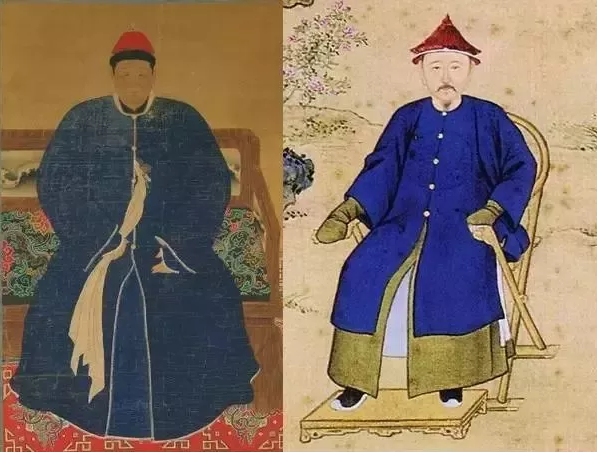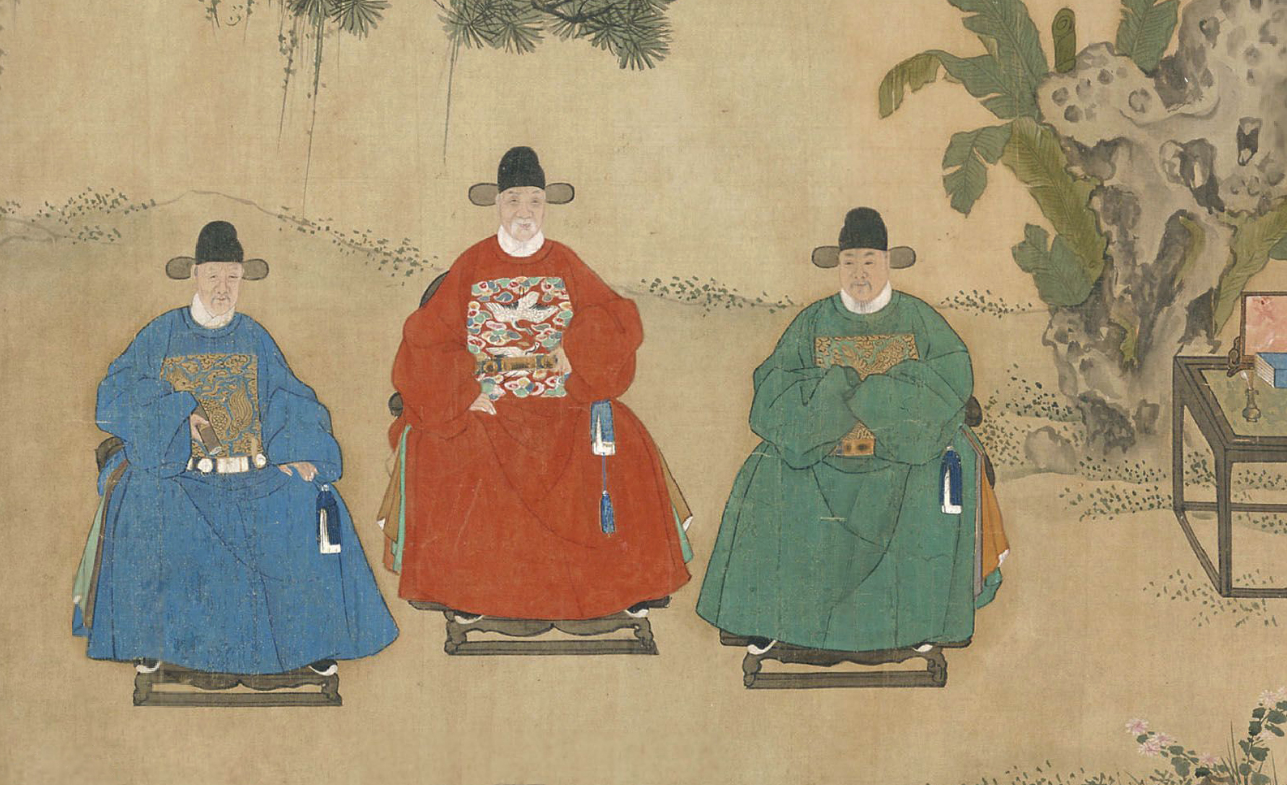Ancient Chinese officials wore distinct attire, including robes with mandarin squares and colorful hat knobs, indicating rank and position.
Historical Overview of Ancient Chinese Official Attire
Ancient Chinese official attire reflects a rich cultural heritage, evolving significantly through various dynasties. This attire, more than just clothing, symbolized status, authority, and societal order, deeply intertwined with the political and cultural ethos of the era.
The Evolution of Official Garments Through Dynasties
During the Zhou Dynasty, officials wore robes that signified their rank and status. The Shang Dynasty introduced intricate embroidery, symbolizing nobility. In the Han Dynasty, the ‘Yi’ and ‘Shang’ robes became prevalent, marked by their simplicity and elegance. The Tang Dynasty saw a fusion of styles, integrating foreign influences with traditional designs. During the Ming Dynasty, the ‘Mandarin square’ or ‘rank badge’ became a key element, displaying the wearer’s rank through specific animal motifs. The Qing Dynasty introduced the ‘Changshan,’ a long robe symbolizing dignity and refinement.

Influence of Confucianism on Dress Code
Confucianism, a dominant philosophy in ancient China, greatly influenced the official dress code. Confucian ideals emphasized modesty, respect, and hierarchy, reflected in the design and color of the garments. For instance, bright colors were often reserved for higher-ranking officials, embodying the Confucian principle of social order. The use of specific symbols, like dragons for emperors, embodied Confucian virtues like wisdom and fairness.
Robes and Garments: Styles and Significance
The robes and garments worn by ancient Chinese officials were not only attire but also symbols of power, culture, and societal hierarchy. Each piece, crafted with precision and care, communicated the wearer’s role and status within the elaborate structure of imperial China.
Colors and Patterns: Indicators of Rank
In ancient China, colors and patterns in official robes played a crucial role in indicating rank. The Emperor typically donned yellow, a color believed to have cosmic significance. High-ranking officials often wore purple or red, colors representing nobility and authority. Lower-ranked officials were limited to more muted tones, such as blue or green. Patterns, too, held meaning; dragons, a symbol of imperial power, adorned the Emperor’s robes, while cranes, known for their longevity, were common on the garments of lower officials. These sartorial choices were deeply rooted in Confucian principles of order and hierarchy.
Fabrics and Materials Used in Ancient China
Silk, valued for its texture and sheen, was the most prestigious fabric in ancient China, often reserved for higher-ranking officials. The quality and weave of the silk further distinguished the ranks. Lower officials and commoners typically wore robes made from hemp or ramie, more affordable yet respected materials. In colder regions, fur-lined robes provided warmth and were sometimes used as a status symbol.
For more insights into the historical context of these fabrics, the Wikipedia page on Silk in Chinese Culture offers valuable information.
Through these robes and garments, ancient Chinese officials not only adhered to societal norms but also displayed their reverence for cultural traditions, showcasing the intricate relationship between clothing, status, and societal values in ancient China.
Headwear and Footwear of Chinese Officials
The headwear and footwear of Chinese officials in ancient times were not mere articles of clothing but symbols of status and authority. These elements played a crucial role in the traditional Chinese dress code, reflecting the wearer’s position and role within the imperial hierarchy.
Design and Symbolism of Traditional Headgear
Traditional headgear for Chinese officials was as varied as it was symbolic. The most renowned was the ‘Guan,’ a hat that indicated the wearer’s rank through its size, shape, and ornamentation. High-ranking officials often wore hats with elaborate designs and precious materials like jade or gold, while lower-ranking officials had simpler, less ornate headgear. The ‘Putou,’ a type of headscarf, was common among scholars and literati, symbolizing their intellectual status. The designs often incorporated Confucian, Taoist, or Buddhist motifs, reflecting the wearer’s beliefs and virtues.
Types of Shoes and Boots Worn by Officials
Footwear, too, was an essential aspect of an official’s attire. High-ranking officials typically wore boots made from fine leather or silk, often embroidered with intricate patterns. These boots were not only a mark of their status but also a reflection of their wealth and taste. Lower-ranking officials and scholars usually wore simpler, softer shoes made from cloth or hemp. In some cases, the color and style of the shoes indicated the wearer’s rank and the nature of their official duties.
For further exploration of the cultural significance of these items, the Wikipedia page on Hanfu provides detailed insights into traditional Chinese clothing and accessories.
Headwear and footwear in ancient China thus served as much more than functional items; they were integral to the identity and stature of Chinese officials, embodying the rich tapestry of Chinese culture and tradition.
Accessories and Ornaments in Official Dress
In ancient China, accessories and ornaments were not just decorative items but vital components of official attire, reflecting status, authority, and personal virtues. These pieces ranged from belts and sashes to jade ornaments, each holding significant meaning and value.
Significance of Belts, Sashes, and Jade Ornaments
Belts and sashes were essential elements in official attire, often made of silk, leather, or brocade. They signified the wearer’s rank and function, with higher-ranking officials wearing wider and more elaborately decorated belts. Jade ornaments, revered for their purity and durability, were common in official dress. These ornaments symbolized moral integrity and were often gifts from the emperor, signifying trust and honor.
The Role of Pendants and Badges in Denoting Status
Pendants and badges were also crucial in denoting an official’s status. The ‘Mandarin square’ or ‘rank badge,’ worn on the chest, displayed specific symbols (like birds or mythical animals) indicating the wearer’s rank. These badges, intricately embroidered and highly detailed, were a key part of the official uniform. Pendants, often made of precious metals or stones, were worn as symbols of wisdom and virtue.
For more historical context on these accessories, the Wikipedia page on Mandarin squares provides detailed information on their design and significance.
Through these accessories and ornaments, officials in ancient China communicated their role, rank, and adherence to cultural values, showcasing the deep connection between attire and identity in Chinese history.

Ceremonial Attire vs Daily Wear
In ancient China, the distinction between ceremonial attire and daily wear for officials was pronounced, reflecting the importance of context and status in their clothing choices. This distinction highlighted the ceremonial grandeur and the practical aspects of daily governance.
Differences in Clothing for Court Ceremonies
For court ceremonies, officials donned their most elaborate and symbolic attire. These garments were often made of the finest silk, adorned with intricate embroidery that depicted dragons, phoenixes, or other symbols of imperial authority. Colors like bright red, purple, or gold were common, signifying wealth and power. Headgear for these occasions was equally ornate, often featuring intricate jade carvings or gold embellishments, symbolizing the wearer’s high status and close connection to the imperial court.
Everyday Garments for Administrative Duties
In contrast, everyday garments for administrative duties were more practical and subdued. These outfits were typically made from simpler fabrics like cotton or linen, focusing on comfort and ease of movement. Colors were more muted, often in shades of blue or brown. The simplicity of these garments reflected the Confucian ideal of modesty and the practical necessities of day-to-day governance.
For a deeper understanding of these clothing styles, the Wikipedia page on Hanfu offers insights into traditional Chinese clothing across different contexts.
Through these distinct clothing choices, officials in ancient China navigated the fine line between grandeur and practicality, reflecting the nuanced social and cultural fabric of their times.
Regional Variations and Foreign Influences
The official attire in ancient China was not a monolith but a tapestry of diverse styles influenced by regional variations and foreign contacts. This diversity reflected the vastness of the Chinese empire and its interactions with neighboring cultures.
Local Adaptations in Official Attire Across China
In different regions of China, official attire adapted to local climates, customs, and materials. The colder northern regions, officials wore heavier, fur-lined robes for warmth. In contrast, the south, with its warmer climate, saw officials donning lighter silk garments. Regional embroidery styles also varied, with some areas favoring more intricate designs, while others preferred simpler patterns. These variations not only spoke to the diverse geography of China but also to the rich cultural tapestry within its borders.
Impact of Foreign Trade and Diplomacy on Clothing Styles
Foreign trade and diplomacy had a significant impact on the evolution of official Chinese attire. The Silk Road, for instance, introduced new fabrics and styles from Central Asia and the Middle East. The Mongol Yuan Dynasty (1271-1368) brought influences from the steppes, evident in the use of fur and leather. Later, during the Ming (1368-1644) and Qing (1644-1912) Dynasties, European trade introduced new textiles and decorative motifs, which were sometimes incorporated into official garments, showcasing China’s openness and adaptability to foreign ideas.
For more information on the impact of foreign trade on Chinese clothing, the Wikipedia page on the Silk Road provides a comprehensive overview.
This fusion of local and foreign elements in official attire highlights ancient China’s dynamic cultural landscape, where tradition met innovation, and regional diversity met global exchange.